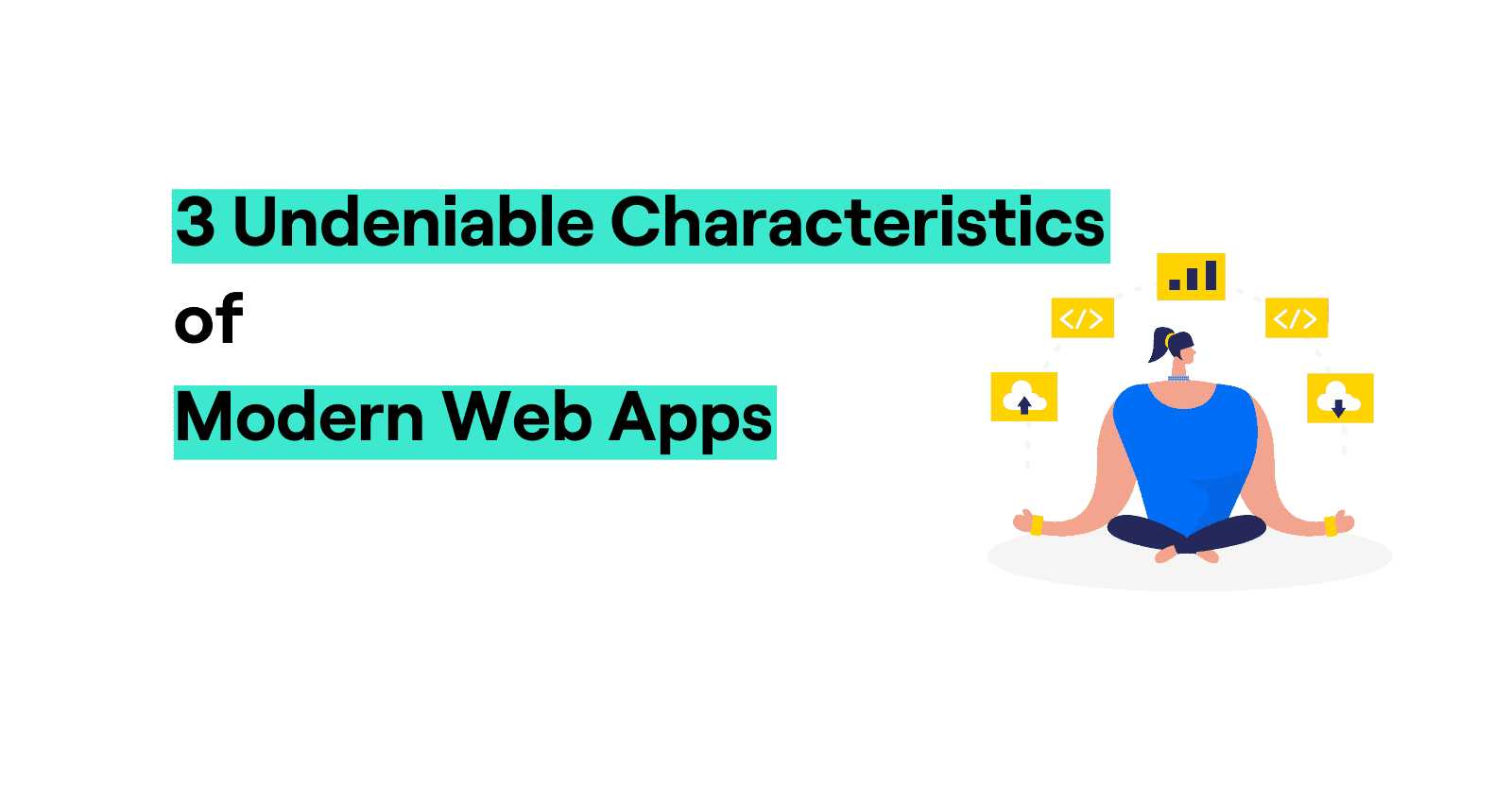There’s no two ways about it: modern web apps are the future. In a previous post, we explained how they are more flexible, cost-effective, and offer a more seamless software integration than legacy systems. They also utilize a modern stack which enables greater compatibility. In this post, we’ll take a look at some other characteristics of modern web applications that make them a must for any business looking to gain a competitive edge in today’s web-based economy.
What Is a Modern Web App?
The term “modern web apps” is a catchall that encompasses an incredibly wide range of applications. What they all have in common, however, is one or more features of modern web application development, such as cloud-based computing, microservices architecture, single page applications, and more.
Why is there a shift towards modern web app development?
It’s simple: users today expect more than ever. They want to access web apps from any device and any operating system 24/7. They also expect their apps to be secure, fast, flexible, intuitive, and to ensure a smooth experience. Oh, and they shouldn’t take up too much storage space or use too much data. And as a service provider, you want your apps to be easily scalable to meet spikes in demand in real time.
For the most part, that’s not something you can achieve with heritage applications and legacy software. This is where modern web applications come in.
Here are three characteristics that make modern web apps uniquely suitable to meet the demands of today’s tech-savvy users:
1. Cloud-Based and Scalable
Most modern web apps are cloud-optimized. In fact, you may be using one right now: Facebook, Instagram, Gmail, WhatsApp, and Google Drive are all cloud-based.
One of the main benefits of cloud applications is that they have lower memory requirements and a smaller footprint — allowing you to host a larger number of apps on the same hardware. Some of the most known public cloud platforms are Amazon Web Services (AWS), Azure and Google Cloud.
Depending on whether you are using a public cloud or a private cloud, cloud-based services offer potentially unlimited bandwidth and storage through Virtual Machines, resulting in much higher throughput than that of on-premise servers. In practical terms, that means you can serve more users from the same hardware without having to upgrade your in-house servers and hosting infrastructure.
What’s more, pay-as-you-go cloud services allow you to scale up or down your business as and when needed — and in real time. You can buy just the data storage you need and not a gigabyte more, so you always get exactly what you pay for without being charged for extra space or fancy add-ons you don’t need.
Cloud-based services also improve the security of your systems. Not only does cloud technology encrypt the data being transmitted and stored, but it also allows you to implement additional security settings based on your individual needs. The result? 94% of businesses report that their application security increased after they migrated to the cloud.
Last but not least, cloud-based apps allow users to access data and applications 24/7 from anywhere in the world (thanks to their always available data centers) — a must for remote work.
2. Modular and Decentralized/Distributed
Modern web development uses microservices, an architectural style that breaks down entire applications into separate smaller components or services.
Unlike monolith application architecture, these decentralized and loosely coupled services can be developed, tested, deployed, and maintained independently. That means you can have two or more teams work on several services simultaneously, saving you money and resources and giving you a much faster time to market.
But that’s not all. Because of their modular nature, microservices have a much smaller surface area that could be exposed to potential attacks. That makes microservice systems more resilient to threats, as well as easier to repair and recover in the event of one.
3. Compatible Across Platforms
Modern application development practices also prioritize compatibility across different platforms. To explain this feature better, we probably need to talk about progressive web apps.
– What Is a Progressive Web App?
Progressive web applications work on any platform — Windows, macOS, or Linux — and most, if not all, major browsers. They are compatible with both desktop and mobile devices of all screen sizes. They automatically scale the visuals, like the Instagram post generator or the Instagram reels generator.
Progressive web apps also pack in functionalities such as push notifications and offline experience just like native apps built with iOS and Android SDKs.
Progressive web applications also allow you to utilize HTML5, CSS together with JavaScript or Typescript frameworks to create a product from scratch. Angular and React are some of the most popular frontend technologies used in building PWAs. With the release of new versions, Angular provides built-in PWA support. React is the foundation for React Native, which lets you easily port apps built with React to native apps. However, you do not have to stick with JavaScript for your back-end if you do not want to, you can use any technological stack there.
– The Benefits of Cross-Platform Progressive Web Apps
A progressive web app is actually a type of website or webpage. So, while you can download it as a standalone iPhone or Android app via Apple App Store or Google Play, you don’t have to. Instead of downloading it from the App Store, you can also simply load it in your web browser – whether it’s Google Chrome, Safari, or any of the other modern browsers.
The goal here is to offer consistent, high-quality performance regardless of the screen size, the pixel density, and the device used to access the app. And when you throw touch interaction and responsive design into the development process, you get a superior user experience — which is critical if you want to keep your customers satisfied and your discoverability at the highest.
Bonus: Automated Testing and DevOps-Enabled Systems
Another outstanding feature of modern web applications is that they can be easily tested using easy-to-write, automated tests. The modular architecture and loose coupling of modern apps allow software developers to test and refine individual components quickly, making it the ideal architecture for progressive enhancement. Containerized system using technologies like Kubernetes and Docker are among the most preferred infrastructures today. Any efforts towards modern web development today would require to use a modern stack and therefore require choosing microservices architecture over monolithic applications.
The Benefits of Modern Web Apps
To list the benefits of modern web apps, we need to answer the question; what are the principles behind modern application development process that make it so desirable?
- Flexibility
- Scalability
- Interactivity
- Cost-effectiveness
- Automated testing
- Cloud-based technology
- Seamless software integration
- Modularity and decentralization
- Cross-platform and browser compatibility
Final Thoughts
Modern web apps are great. However, they are not a one-size-fits-all solution. While you might benefit enormously from using modern apps in some aspects of your business, your legacy software could be all you need in other areas. In fact, studies show that companies consistently spend 75–85% of their development budget on maintaining existing applications. Often, they have good reasons to do so.
If you want to integrate modern web apps in your IT infrastructure but don’t know where to start, drop us a line. Among other things, we at Zartis specialize in helping businesses improve their scalability and user experience through the strategic use of modern architecture.
And if you want to learn more about modern web application development, check out these posts:






